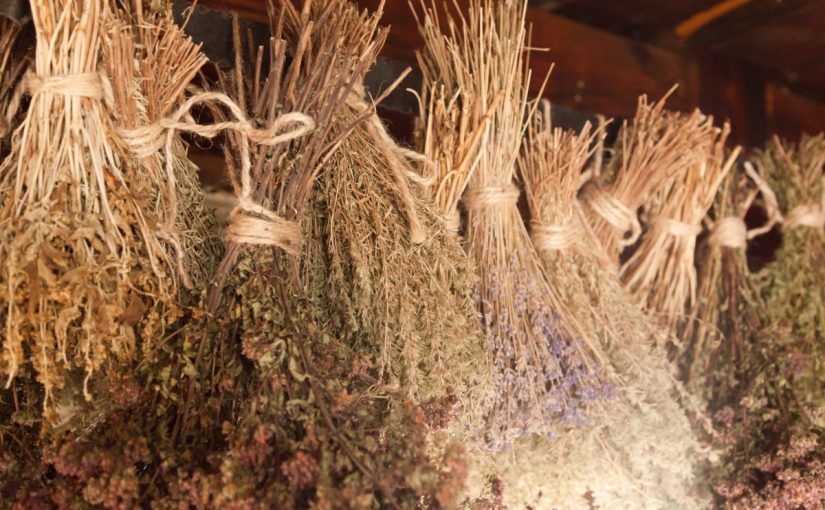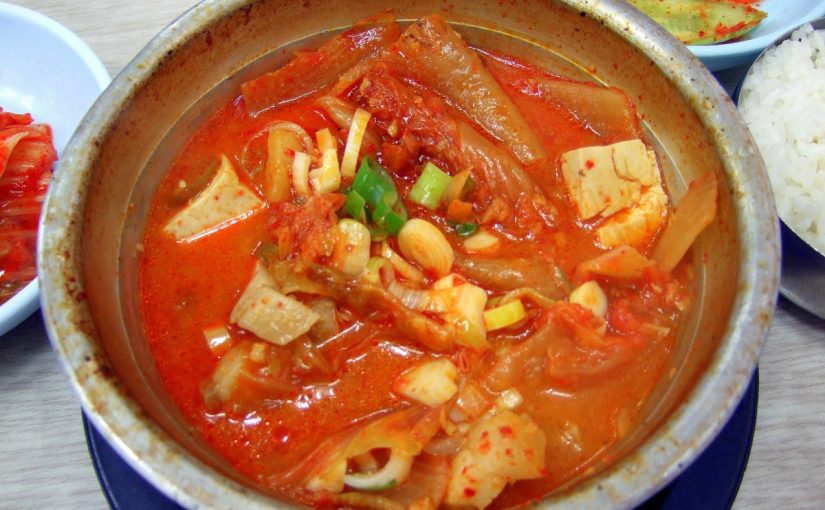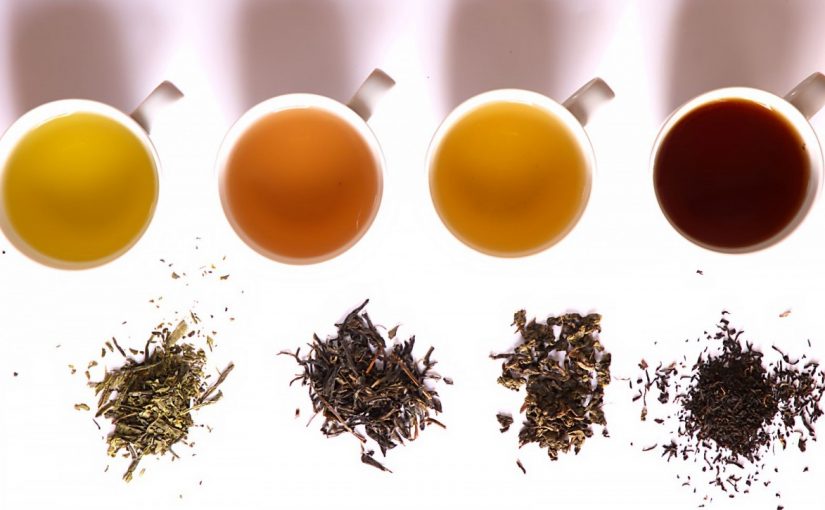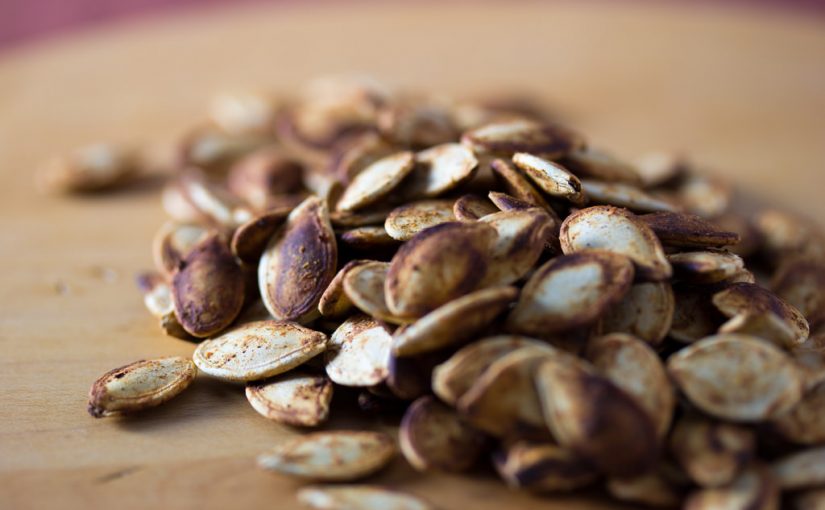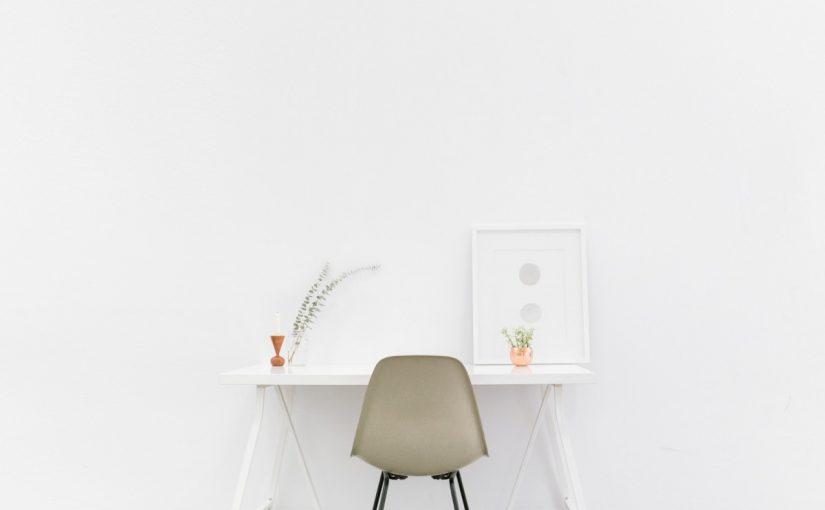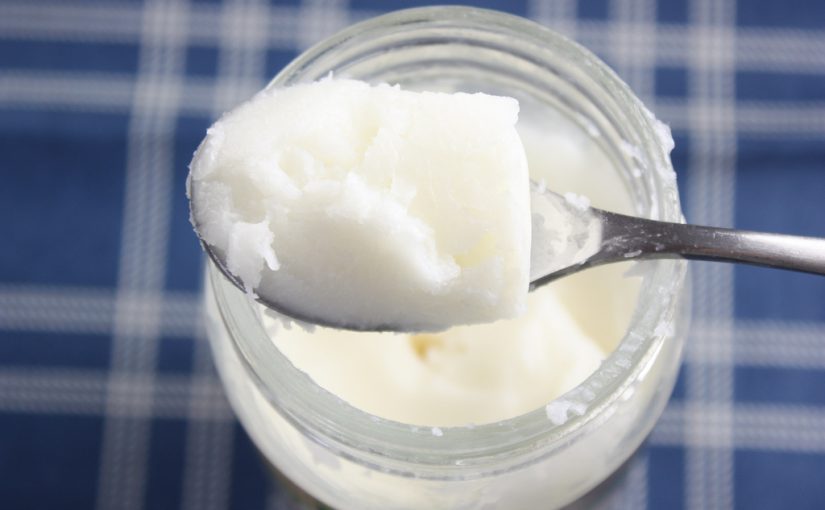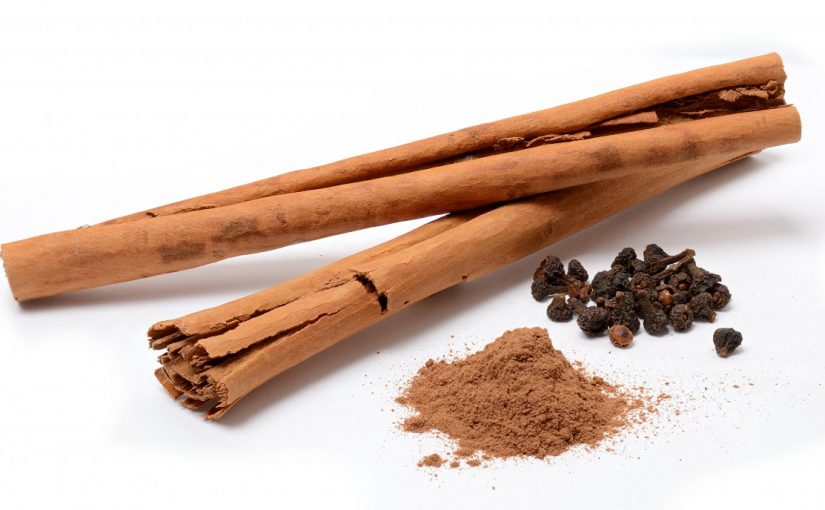The student will explore herbal medicine and healing through food by reading, writing, watching films and documentaries, and classroom experience. The student will embark on field explorations of local forests, the Organic Farm, and various eating establishments and kitchens. The student will also research, form a definition of, and develop a practice of conscious eating. The student will write weekly entries on their wordpress site summarizing their work. Additionally, the student will present the current state of their project to the class at intervals throughout the quarter.
Category: Project Weekly
Critical and Conscious Eating Definition
Critical and conscious eating is the practice of engaging with one’s food throughout the process that brings it to and through one’s body; from the nutritional value of the diet of the cow whose meat one eats to the physical sensation of digestion, conscious eating examines the relationship between that which is eaten and that which is felt. It is about experiencing agency over one’s physical health through the decisions one makes concerning food. For the purposes of this ILC, conscious eating also incorporates the consumption of herbs used for healing into one’s diet preventatively rather than through supplements or other means after the fact.
Week 9: Planning for Spring Quarter
Well! It’s nearly the end of the quarter, so I figured I would take this week’s project update as an opportunity to discuss the wrap-up of my research this quarter and what I’ll be looking forward to in the next!
To finish out this quarter, I will be compiling my information on the practice of conscious eating and dietary herbalism in a private document to be turned into a brochure next quarter. I also will be working several hours each week with Aurora and a few other students to rehabilitate Evergreen’s Elizabethan herb garden and process the herbs into teas and possibly lotions and salves as well.
Initially we will be working to weed the garden and identify the healthy plants living there, and then we will be purchasing some seeds and starters to hopefully bring a flourishing spring herb harvest.
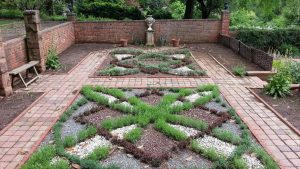
We will also be working to make a book with the layout and uses of the herbs as well as drawings and pressed plants. We plan to split the work of the quarter into six phases which will weave together as plants are ready for market, but the idea is to plant, weed, design labels, harvest, process, and create tea blends. We plan to dry the herbs in the Gnome Shed and our own homes prior to making our teas.
Additionally, I will continue my food studies. I don’t yet know where that will take me, but I am spending spring break in Washington D.C. at museums and historical locations, and plan to see several exhibits currently at the Smithsonian related to food culture in the United States. Hopefully that will give some direction to my more general ideas about what I plan to study.
I have also discussed with Kotomi the possibility of working together (recycling her used tea leaves) to make tea cheeses. I have an interest in studying the process of cheesemaking, and am interested in exploring that process especially through local farms and small dairies.
Finally, as a part of my blog for next quarter, I plan to begin a YouTube channel dedicated to my work in food studies and the herb garden. I will document progress in both, create recipes and prepare dishes, and discuss topics in the program.
Week 8 Project Update: Chef’s Table, Fermentation, and Temple Food
This week I spent a lot of time watching Chef’s Table, a Netflix documentary series that I would highly recommend to everyone in this program (and out of it as well). One episode in particular stuck with me, and I have now done a ridiculous amount of research on its subject and her cuisine, namely Jeong Kwan and temple food. In a phenomenon particularly unique to Buddhist temples in South Korea, an ancient food culture is finally emerging in media.
The philosophies behind temple food are simple: it is sustenance and an expression of joy and connection, though it excludes ingredients deemed inflammatory to the mental state necessary for meditation (garlic, onion, green onion, spring onion, and leek) and foods traditionally not eaten by Buddhist monks and nuns (meat, fish, MSG, and dairy).
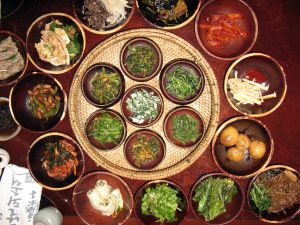
Yet somehow, the nutritional needs of those who eat it are sufficiently and artistically met, and the food is delicious, nourishing, and fully satisfying even to a voracious American palette. In fact, Jeong Kwan was flown from South Korea by Eric Ripert to prepare a meal at Le Bernadin. Her food in particular appears to be delicate, flavorful, transcendent, and spiritually unique. However, the practice of temple food, often centered around homemade kim chi, pickled vegetables, and aged soy sauce.
Soy sauce to Buddhist monasteries in Korea is what Molé is to Oaxacan chefs – a continual process. Soy sauce is rarely started new, only added to to enhance and enrich flavor. In some places, soy sauce is left to ferment for 200 years. I had always just assumed the Kikkoman jugs I bought at the grocery store were all there really was on the market!
This practice interested me so much because of my shifted focus towards conscious eating. In a way, eating to optimize meditation is the ultimate expression of that practice. Monks and nuns are so in tune with their bodies that they can sometimes affect their emotions, physiology, and even their longevity through meditation and centered focus. My whole interest in conscious eating is on the ways we can impact how we feel through what we eat, and temple food seems to be the ultimate expression of this.
Week 6 Project Update: The Dark Other and Getting Tea Drunk
This was one of the most interesting weeks I’ve had the privilege of in my education. To begin the week, I was working on my narrative self-evaluation and trying to juggle a million personal projects. But I brought a fresh mind (though almost definitely not enough sleep) to class on Tuesday, and efforts to stay positive paid off. I had a great class, thoroughly enjoyed our tea tasting. Sarah suggested I write about our experience with the Week 6 tea tasting because of the unique social dynamic it manufactured.
As we drank our pu-er – some raw and some cooked, exploring multiple steepings and a range of complex and earthy flavors, we got somewhat giggly. As the tasting went on, we asked more questions, opened up, became vulnerable and silly and exploratory. It in many ways mimicked many of the symptoms of slight drunkenness, and I don’t understand why. I certainly enjoyed it (especially as tea drunkenness doesn’t seem to come with a hangover!) despite my inability to articulate exactly what it was. I left class that afternoon in a pleasant daze, and went on to dinner and the rest of my evening with an overwhelming sense of calm contentedness.
I was excited to meet with Sarah for my mid-quarter evaluation in the morning (boy did that sneak up), and after meeting to discuss the future of my ILC following through to next quarter, I attended a few hours of Farmworker Justice Day and hear about the current work with the CCBLA.
After that, I attended an incredible, life changing, and transformative talk by Dr. Alexis Pauline Gumbs. You can (and should) watch the full video of her talk here. She is a scholar, poet, author, speaker, and artist specializing in black feminist narratives and queerness. Her website can be found here and I highly recommend you explore it and her writings.
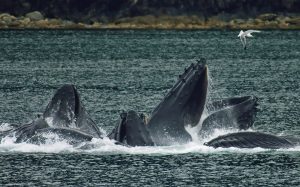
As she spoke from her new (and yet to be published book) she engaged us in what she described as an “echolocation re-memory oracle” based on whale communication which I could neither define nor describe to you, but if you’re interested in some possible explanations you can find them here, here, and here. She spoke a word from a poem read at the beginning of her presentation, asked us to do an out-loud free-association game (as she described, “like a free association…if we were free”), selected a triggering word from the audience, searched it in her manuscript document, and read a surrounding passage. So much of what she read was (for lack of a better phrase) blowing my mind, and I scribbled down verbatim as much of what she said as I possibly could. Below are some of her words (and in some cases context) that I found particularly memorable, triggering, or at least worth some unpacking. Let me know what strikes your fancy here! Just a few of my absolute favorite and most provoking quotes are bolded.
In reference to the idea of human communication (echolocation) across great distances “there is no sound I cannot travel through.”
“[we must learn] to open and shut our mouths appropriately.”
“look at them when they are silent. it’s almost like it hurts to be so soft.”
The following quotes relate to a passage describing the transatlantic slave trade from the perspective of an enslaved person crossing the ocean in the hold of a ship: “we were preserved and packaged flesh.” “they had thought themselves the owners of their bodies.” Then, she goes on to describe the enslavement once landed in the Americas: “those hands that wanted to do and make…refined reuse into ritual.”
“scientists who had never understood dark matter [sought to measure it]” in which the dark matter exists both as the dark other, the dark body, the soul, the abyss, and the very fabric of space – the existence of all of these things is intertwined in Gumbs’ writing.
“they remembered the selves they had sent across generations.”
“welded by her intention”
“we scale the edges of our knowing.”
“there was the face she thought was hers when she saw it in her dreams.”
“do like the colonizers did and let the pheromones override the visual”
“not without effort, but without force”
she describes prison tattoos as “rebirthmarks” and says “even when their skin was stolen they remembered the maps and went within.”
“black feminist metaphysics, which is to say: breathing”
“the dark feminine, which is to say: everything”
“we violate the trust of being born.”
“what was in them [poets] that made work more food than food was?”
“they say it’s about sea level, but the sea doesn’t have to level with you.”
(last note: the choice not to capitalize the beginning of quotes was intentional; so far in Gumbs’ published works, she chooses not to capitalize the first letters of new sentences á la bell hooks or e.e. cummings)
Gumbs, D. P. (Writer). (2017, February 15). After Brightest Star. Live performance in Washington, Olympia.
Spoken word interactive lecture including excerpts from the author’s upcoming book M Archive: After the End of the World
Week 5 Project Update: Conscious Eating
Week 4 Project Update
This week in my project: research, nutrition, and traveling home.
It’s been a tough week. I haven’t been feeling quite myself recently, so it was hard to motivate to get my hours in. However, a short trip home for my Dad’s birthday felt really good, and talking to my parents about my program renewed some of my energy. We cooked together, ate together, and talked about food and nutrition and minimalism.
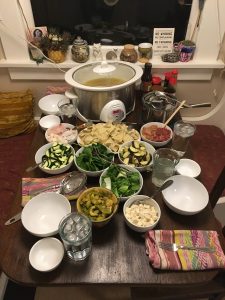
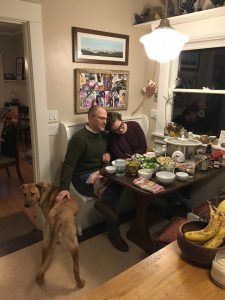
Cooking has always been an incredibly important part of my relationship with my parents. It was a special opportunity to take skills I had learned with my Aunt Shannon for making traditional Chinese hot pot and teach them to my Mom, the person from whom I have learned all of my chef skills.
Most of my work this week has been good old-fashioned book learning. I have so much to catch up on in my knowledge of plant medicine, and the more I learn the more tangents I go on. I’ve recently become fascinated with cilantro and how it binds with heavy metals in your digestive tract to pull them out of your body. Also, apparently we should all be eating chlorophyll. Go figure!
My main interest in herbalism is shifting from exploring how to make remedies for sickness or to improve wellness, but rather how consuming medicinal herbs and ingredients and consciously incorporating them into one’s diet can help with nutrition, health, and a connection to the way our food affects our bodies.
Sidenote: the documentary The Minimalists on Netflix is really fantastic. I’d love to have a discussion in class about minimalism in food (both preparation/display and content and the value or use of simplicity in cuisine). There’s also a website on minimalism here and my favorite blog on living simply and consciously here. These philosophies have greatly influenced my own ideas and priorities surrounding my body and my health.
Week 3 Project Update / Self-Experimentation: Coconut Oil
This week, as with last week, I decided to do another self-experiment. Though my focus is on herbal medicine in the Pacific Northwest and cinnamon and coconut oil are not native to this region, I find it helpful to get a baseline knowledge of herbalism and natural remedies before I dive headfirst into regional medicine. Additionally, I am not treating any specific illness with these “remedies,” only seeing their potentially positive impact on my body, which I consider to be generally healthy and unproblematic. An important part of health is wellness, not just survival or treatment of symptoms, so I am embarking on this period of herbal self-experimentation as a method of improving my quality of life and overall health and not treating something, which I will get into in more depth as I do more research.
But, I digress. This week, I decided to explore the effects of coconut oil on my body. A long time ago, I read an article about the importance of drinking the milk at the bottom of your cereal bowl – the water soluble vitamins in the cereal will be digested just by eating, but the fat soluble ones must sit in the milk in order for you to get them, so drinking the milk enriches your vitamin consumption. I don’t know how accurate that article was, but I have done some research on fat versus water soluble vitamins, and it clearly is important to have both. But that got me thinking – if vitamins can be fat or water soluble, what about bacteria?
Many skincare experts suggest washing your face with an oil based cleanser as well as a water-based (soap) cleanser. Also, many cultures have used oil pulling for thousands of years as a way to clean teeth, believing that swishing oil in one’s mouth is a way to avoid plaque build-up, tooth decay, gum recession, and even bad breath. So is coconut oil the silver bullet for acne, skin dullness, halitosis, and sautéed vegetables? This week, I decided to find out.
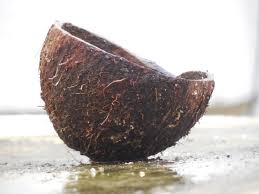
Instead of cleansing my face with just my usual soap, I also removed my makeup with an oil cleanser. And in addition to brushing my teeth with my usual tooth powder, I began my nightly oral routine with oil pulling for ten minutes with coconut oil.
Within a few days, I noticed a significant difference in my skin. It felt clearer, I had fewer zits pop up, and I didn’t once find any residual makeup on my pillow the next day. The tooth one is harder to judge – whitening takes time to notice, and though my mouth felt cleaner, that isn’t exactly an accurate measure of how much it may or may not be helping on a deeper level. It doesn’t seem to be doing any harm, however, and my breath smells good so I think I’ll continue.
That’s it for this week with me as an herbalist guinea-pig! Next week I’m hoping to use some foraged plants from Evergreen’s forest to treat the pain and bruising I have from rollerskating for the first time, though that’s a story for another post.
Week 2 Project Update / Self Experimentation: Cinnamon
Week 2 has been fantastic so far. After tasting the cinnamon tisane we made in week 1 and learning about its potential medicinal properties for treating diabetes, I became interested in how it could affect my own experience of taste. About a year ago, I became obsessed with a movie called That Sugar Film, an Australian documentary in which a man who doesn’t consume sugar decided to embark on a “sugar binge” á la Supersize Me. However, in That Sugar Film, instead of eating exclusively foods unusually high in sugar, he simply ate the average Australian diet and consumed the expected, even healthy amount of sugar each day, and put on an enormous amount of weight, and did serious damage to his health.
After seeing that film, I decided to stop eating sugar for a month, and other than losing weight, feeling more energetic, and feeling hungry less often, I also found that my experience of the flavor of sweetness was at a much lower threshold than before. In fact, I hardly needed half a teaspoon of sugar for my tea to taste sweet, as opposed to the usual two I put in.
This week, instead of eating sugar, I treated my craving for sweetness with cinnamon stick tisane and observed the difference.
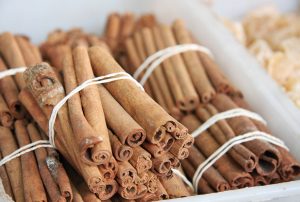
I felt more energetic, slept better, shed about a pound, lost a lot of bloat in my face and belly, and when I ended the experiment, I didn’t crave sugar as much or need as much to satisfy the urge.
To be sure, some of these results could definitely be the placebo effect. I wanted the experiment to yield results, so maybe it did, and it was by no means conducted under scientific conditions. However, I find it good for myself to do something of a “reset” of my sugar tolerance from time to time by going without it for a while, and this was an effective way to do that. Plus, cinnamon is delicious!
Week 1 Project Update
Welcome to my project! As of yet, I have very little idea of where I want to take this. I am starting with work on my ILC and gathering resources. I took a trip down to Radiance to talk with employees and explore their in-house library, and I will be ordering several books recommended to me from them. For now, I know I want to study herbalism specifically in Washington and possibly work on foraging skills and putting together comprehensive information on what medicinal uses there may be for plants found on Evergreen’s campus.
